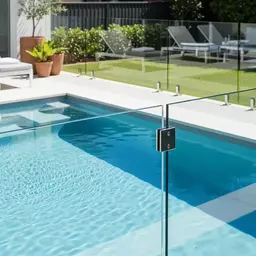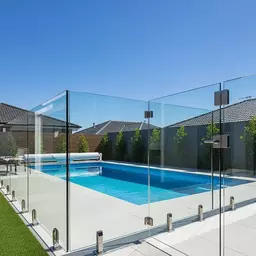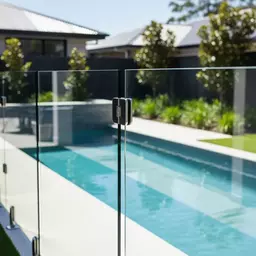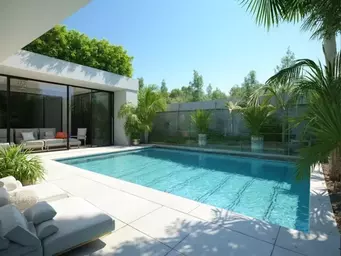Regulatory Framework
- • **AS 1926.1:** Safety barriers, design & height
- • **AS 1288:** Glass installation & strength
- • **BCA:** Minimum design & construction
Did you know that complying with glass pool fencing regulations can significantly enhance the safety of your outdoor space? Let's explore the essential lessons that every homeowner should be aware of to ensure compliance and peace of mind.
This visual summarizes the critical standards and material specifications for glass pool fencing in Australia, ensuring both safety and compliance.
At Pool Fencing Pros, I often emphasize the importance of adhering to Australian glass pool fencing regulations. These rules are not just legal requirements; they play a crucial role in ensuring safety and compliance for your swimming area. By following these regulations, homeowners can enjoy their pools with peace of mind, knowing that they are protecting their loved ones and meeting local safety standards.
When it comes to pool safety, compliance is key. It prevents accidents and ensures that your pool area is secure, particularly for children and pets. The peace of mind that comes from knowing your pool fencing is compliant is invaluable!
Compliance and safety standards are the backbone of any glass pool fencing installation. These regulations are designed to mitigate risks and establish clear guidelines for homeowners and installers alike. Adhering to these standards not only fulfills legal obligations but also demonstrates a commitment to creating a safe and enjoyable environment.
Understanding these standards will empower you to make informed decisions regarding your pool fencing solutions. By prioritizing safety, you're not just complying with the law—you're enhancing the overall value of your property.
Two of the most important standards governing glass pool fencing in Australia are AS 1926.1 and AS 1288. These standards outline the requirements for safety barriers and glass strength, ensuring that your installations withstand the test of time and comply with safety measures.
Being familiar with these standards can guide you in selecting the right materials and installation techniques, ultimately leading to a safer pool area. At Pool Fencing Pros, we ensure that all our installations meet or exceed these regulatory standards.
The Building Code of Australia (BCA) plays a pivotal role in glass pool fencing regulations. It sets out the minimum requirements for the design and construction of buildings and structures, including safety barriers around pools. Understanding the BCA is essential for homeowners and builders to ensure compliance and safety.
By adhering to the BCA, you're not just meeting legal requirements—you're also contributing to a culture of safety in your community. At Pool Fencing Pros, we stay updated on these regulations to provide our clients with the best possible service and advice.
Choosing the right type of glass is crucial for your pool fence. The two main types are toughened and laminated glass. Toughened glass is known for its strength and ability to withstand impact, while laminated glass offers additional safety through its layer of plastic sandwiched between two sheets of glass.
Both glass options have their advantages, and selecting the right one depends on your specific needs and preferences. At Pool Fencing Pros, we guide you through these choices to ensure you get the best for your project!
Understanding the necessary glass thickness standards is vital for pool fencing safety. The Australian regulations specify that glass must be at least 10mm thick for pool fencing applications, ensuring durability and strength.
Additionally, the safety barrier requirements dictate the overall design of your pool fence to prevent accidental access. This includes regulations on how the fencing is installed and maintained to ensure optimal safety.
By adhering to these standards, you're not only ensuring compliance but also enhancing the safety of your outdoor space. The expert team at Pool Fencing Pros is dedicated to helping you meet these requirements with our high-quality installations!
It's essential to clarify the minimum height requirement for glass pool fencing, which is set at 1.2 meters. This height is designed to deter young children from climbing over the fence. Additionally, the concept of non-climbable zones helps to prevent access by design, making your pool area safer.
By understanding these requirements, you can make informed decisions about your pool fencing design. At Pool Fencing Pros, we're committed to providing you with safe and aesthetically pleasing solutions that meet regulatory standards.
In Australia, approximately 300 children under the age of five drown in swimming pools each year. This statistic highlights the critical importance of compliant pool fencing. Ensuring your pool area is properly fenced can significantly reduce the risk of such tragedies, making it not just a legal requirement, but a vital safety measure for your family.
As we've explored, understanding and adhering to Australian glass pool fencing regulations is crucial for ensuring safety in our outdoor spaces. Compliance not only protects our loved ones, especially children, but also helps maintain the aesthetic appeal of your home. Remember, the right fencing not only meets regulations but also enhances your property's charm!
To sum it up, here are some key compliance and safety takeaways:
To make your journey toward compliance smoother, I’m excited to offer a downloadable compliance checklist! This handy resource will guide you through the essential steps for ensuring your glass pool fencing meets all necessary regulations. It's a great way to stay organized and informed. You can easily keep track of what needs to be done, from checking glass thickness to ensuring proper height requirements!
Stay ahead of the game by subscribing to our updates! At Pool Fencing Pros, I regularly share the latest regulatory changes and expert insights that can help you navigate the complex world of pool safety. Whether it’s new standards or practical tips, you’ll find valuable information right in your inbox that can aid in keeping your pool area safe.
Lastly, it’s essential to engage with community safety initiatives and explore available resources for pool safety education. Many local councils and organizations offer workshops, informational sessions, and materials to help educate homeowners about their responsibilities regarding pool safety. By participating in these initiatives, you not only enhance your knowledge but contribute to a safer community for everyone!
Here is a quick recap of the important points discussed in the article:

 Did you know that neglecting glass pool fencing maintenance can lead to both safety risks and dimini
Did you know that neglecting glass pool fencing maintenance can lead to both safety risks and dimini
 Considering a glass pool fence? Understanding the costs involved can save you from unexpected expens
Considering a glass pool fence? Understanding the costs involved can save you from unexpected expens
 As you create your haven by the pool, have you considered that safety and style can coexist? Glass p
As you create your haven by the pool, have you considered that safety and style can coexist? Glass p
 Consider this: a beautifully designed glass pool fence not only enhances the aesthetic of your outdo
Consider this: a beautifully designed glass pool fence not only enhances the aesthetic of your outdo